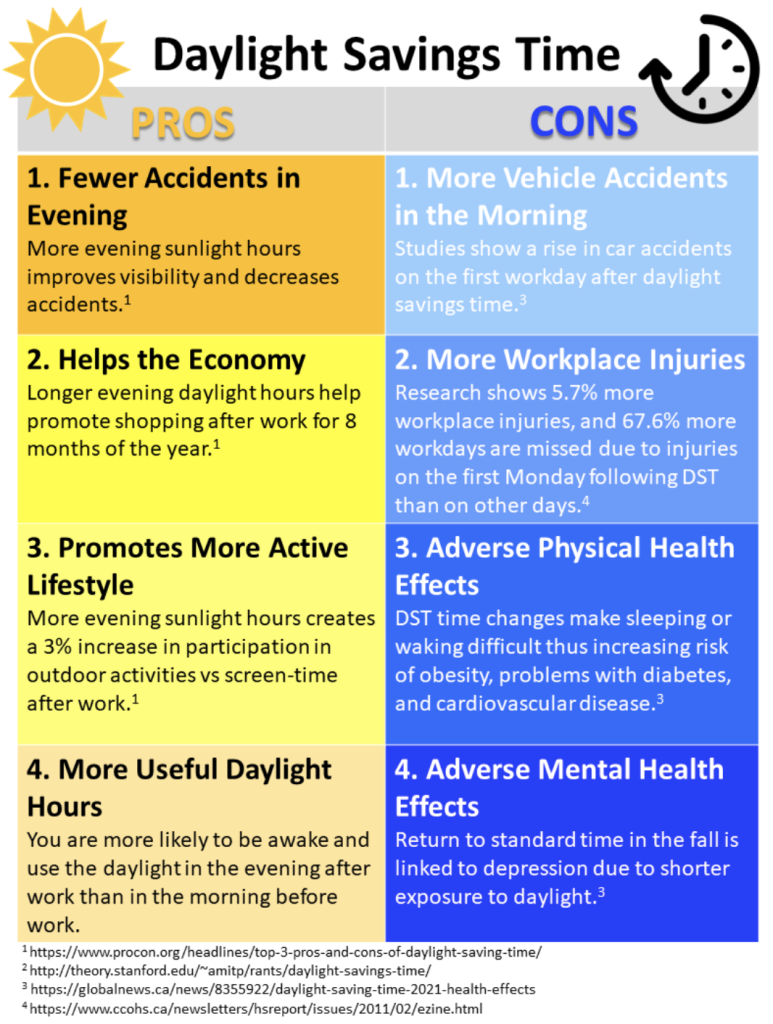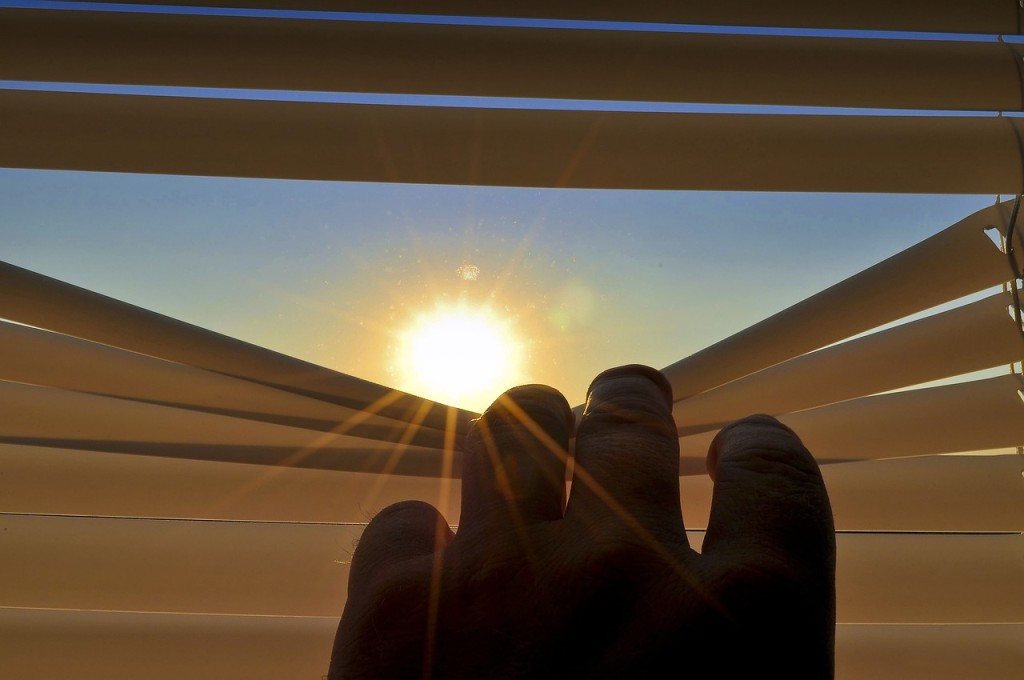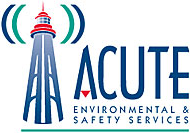Every year we go through the process of setting your clocks back an hour in the fall, and an hour ahead in the spring. The main reason for this practice is to make better use of natural daylight during the longer days of summer, ultimately aiming to conserve energy and make more efficient use of available daylight.
But, when it comes to workplace safety, is daylight savings time a hazard? Read on to learn more.
Click on each corresponding link to jump ahead:
- Is Daylight Savings Time a Hazard?
- Increased Risk of Motor Vehicle Accidents
- Adverse Health Effects
- Tips for Avoiding Daylight Savings Hazards
Acute Safety & Safety Services provides comprehensive health and safety training, on-site safety services, and consulting services. With over 100 years of combined experience, our company staff offers more than theoretical or abstract ideas – ACUTE offers solutions. Contact ACUTE today for all your workplace safety needs.
1. Is Daylight Savings Time a Hazard?
The answer to the question “Is daylight savings time a hazard?” is a resounding yes, according to the Occupational Safety Group. Since it began early in the 20th century, its effects are felt mostly in spring when we lose an hour of sleep. There seems to be less risk of workplace accidents in the fall when we gain an hour of sleep.
Time And Date adds, “On Mondays after the start of daylight savings time, there were more workplace injuries, and the injuries were of greater severity compared with other Mondays.” Given this, it is critically important to be extra diligent if working in confined spaces or at heights on that day.
Here’s a quick look at the pros and cons of daylight time savings:

Consider the pros and cons of daylight savings time.
Now, let’s consider the various physical and mental effects caused by daylight savings time:
2. Increased Risk of Motor Vehicle Accidents
The Canadian Centre for Occupational Health and Safety (CCOHS) reports that when we put our clocks forward (in the spring), motor vehicle accidents increase by an astounding 23% the following Monday. Not only will this impact your drive to work, but if you drive as part of your job, or are a pedestrian in a warehouse, you’re also at risk of being affected. For instance, forklift and crane operators, truck drivers, and even pilots are all at increased risk!
Here’s one case study to keep in mind: According to the new University of Colorado Boulder Research, presented by ScienceDaily, “Fatal car accidents in the United States spike by 6% during the workweek following the “spring forward” to daylight saving time, resulting in about 28 additional deaths each year“.
Individuals need to be educated on the risks associated with driving while tired. Watch the video below to learn more about this issue and how to combat it:
Watch this video and learn about the risks of driving tired.
Why is there such a drastic increase in motor vehicle accidents?
Is daylight savings time a hazard? Yes. This increase in motor vehicle accidents can be attributed to several factors, such as:
- Sleep disruption
- Reduced cognitive function
- Reduced visibility in the mornings
- Rushed morning commute
- Increased evening activities
Therefore, be extra cautious throughout the days following the spring forward to daylight saving time. Do whatever you need to get a good night’s sleep and drive safely!
3. Adverse Health Effects
Losing an hour of sleep also increases the risk of severe health afflictions such as heart attacks and strokes. In fact, a Swedish study found that the risk of having a heart attack increases in the first 3 weekdays after switching to daylight savings time in the spring.
OSG also cites a study which indicates that daylight savings time leads to an 8% increased risk of having a stroke.
It is also important to note that sleep impacts mental health. Lack of sleep may result in increased irritability and distress. Anxiety and depression are often linked to unhealthy sleep habits or the inability to get enough sleep. Losing that hour of afternoon daylight in the fall after setting the clocks back to standard time can trigger mental illness and seasonal affective disorder (SAD), also known as winter depression. For Instance,
- A Danish study found an 11% increase in depression cases after the time seasonal change, and the cases dissipated gradually after 10 weeks.
- An Australian study found that male suicide rates increased the days after the spring and fall DST shift.

Don’t be the one that falls asleep on the job! Get a good night’s rest.
Why does daylight savings time lead to these adverse health effects?
Is daylight savings time a hazard? Yes, there are several reasons why it leads to adverse health effects, such as:
- Sleep Disruption: As we know, moving the clock forward by an hour can lead to a sudden shift in sleep patterns. This shift can result in difficulties falling asleep and waking up at the desired times, causing sleep deprivation. Sleep is crucial for overall health, and disruptions can lead to mood changes, decreased cognitive function, and increased risk of accidents.
- Circadian Rhythm Disruption: Our bodies have an internal circadian rhythm that synchronizes with the natural light-dark cycle. DST can cause a misalignment between this internal clock and the external time cues, which can disrupt various bodily functions, including hormone secretion, metabolism, and even immune system function.
- Cardiovascular Effects: As mentioned, research has shown a potential link between DST transitions and an increased risk of cardiovascular events, such as heart attacks and strokes. The disruption in sleep patterns and circadian rhythms can stress the cardiovascular system, especially in individuals who are already at risk.
Given this, make sure you are taking care of your body, both physically and mentally. Start by getting a good night’s sleep.
4. Tips For Avoiding Daylight Savings Hazards
Fatigue can decrease productivity, concentration, and general well-being. In workplaces where heavy machinery is used, or where certain tasks require attention to detail, taking steps to offset the effects of daylight savings time is very important.


Pour yourself a cup of coffee and let that sunshine in!
How to better handle the time change:
Is daylight savings time a hazard? Yes. Here are some general tips to consider:
- Set your alarm to wake up a little earlier than usual on the Friday and Saturday before the switch. This makes it easier to get out of bed on Monday morning.
- Eat a healthy breakfast first thing in the morning. Food tells your body it is time to start the day.
- Avoid heavy meals before bed. This can lead to disruption and discomfort in your sleep.
- Limit screen time before bed. Blue light emitted by screens can impact your body’s production of melatonin, thus impacting your sleep.
- Go for a walk. Light, and especially sunlight, helps to adjust your body clock. Getting outdoors is also good for your mental health.
Here are some tips to consider if you are a supervisor:
- Give your employees extra time to drive to and from work, especially during the Monday commute, to avoid a potential accident.
- Schedule particularly hazardous work later in the week (where possible) after employees have had more time to adjust their sleep schedules.
- Educate all employees about signs of fatigue and drowsiness.
- Monitor your employee’s performance and consider offering support.
- Communicate the time change in advance and instruct employees to gradually adjust.
- Take extra safety precautions and assign extra safety monitors on days following the switch to DST to help avoid potential workplace injuries before they occur.
- Set up a rest/nap area to help employees adjust.
In addition, you should always make sure all your employees are properly trained and that their certifications are up to date. Also, remember: There are several workplace health and safety posting requirements in Ontario, and those signs will come in handy after the time change.
Trust ACUTE to Help Keep You Safe!
So, is daylight savings time a hazard? Yes, and especially so in the spring when you lose an hour of sleep. Workplace safety can never be overlooked! Given this and a variety of other reasons, you should trust ACUTE for all of your safety needs.
ACUTE offers the solution to all of your health and safety training needs by emphasizing client participation and establishing rapport in all of our classes. We want to build a relationship with our clients, foundational to the provision of safety services moving forward. As ACUTE’s president and co-owner Ron Campbell says, “At the end of the day we want to make sure our clients go home safe and sound to their families. That’s what we do”.
If you have any questions concerning daylight saving time and how to protect your employees from unnecessary risk, contact us.

ACUTE can help you create a safe workplace.
If you are in charge of supervising health and safety in the workplace and are looking for high-quality online safety training or in-person safety training, book a course with ACUTE. Also, if you have any questions regarding daylight savings time and how to combat the risks associated with it, contact us.
Here are some of the benefits of working with ACUTE:
- Open Door Instructor-Student Partnership – ACUTE’s training services emphasize client participation, staff foster relationships with clients and serve as a touchstone for advice anytime moving forward.
- Serving Your Team and Industry – With a vast array of clients in manufacturing, construction, health, academic, and government sectors, ACUTE brings the best safety practices from across the spectrum to your workplace.
- 100 Years Combined Experience – ACUTE provides comprehensive health and safety training, on-site safety services, and consulting services. With over 100 years of combined experience, our company staff offers more than theoretical or abstract ideas. ACUTE offers solutions!
- Track Record of Success – ACUTE is rated 4.9/5 stars on Google reviews, demonstrating our commitment to our clients, our quality, and our passion for training.
What Our Customers Are Saying…
We were referred to ACUTE on behalf of our employer for an n95 mask fitting – the staff here are professional, personable, and informative.
I’d come back here for any safety-related training in a heartbeat.
Acute has been a staple in supporting my companies over the years and have always delivered quality and dependable service. Training programs are top shelf and a great facility for practical application. couldn’t recommend them more. keep up the great work folks.
Outstanding service provided by Acute, right from the customer support end, right through to the delivery of the session. Always professional, quick to respond, and always delivering services that exceed my expectations. Acute has an amazing team that is always helping us achieve better health and safety performance. So are grateful to have such a tremendous resource in Acute!
Hours of Operation and Contact Information:
Monday-Friday: 8:00 AM – 5:00 PM
Saturday-Sunday: Closed
Phone: (519) 747-5075
Fax: (519) 747-4608
Email: info@acuteservices.com

